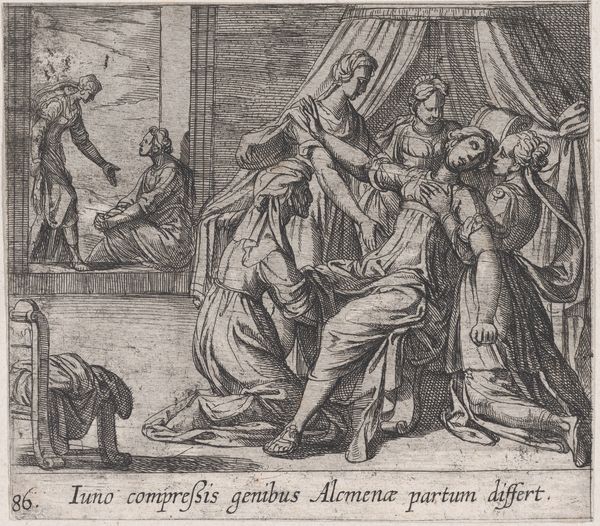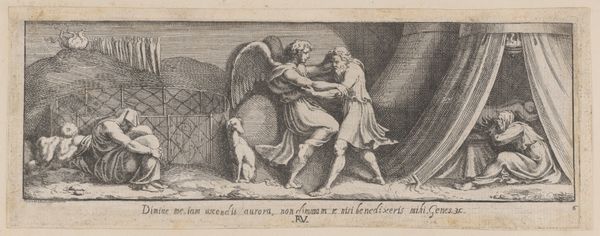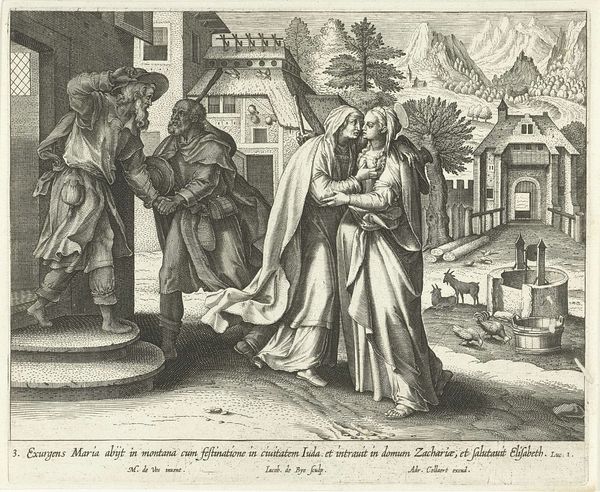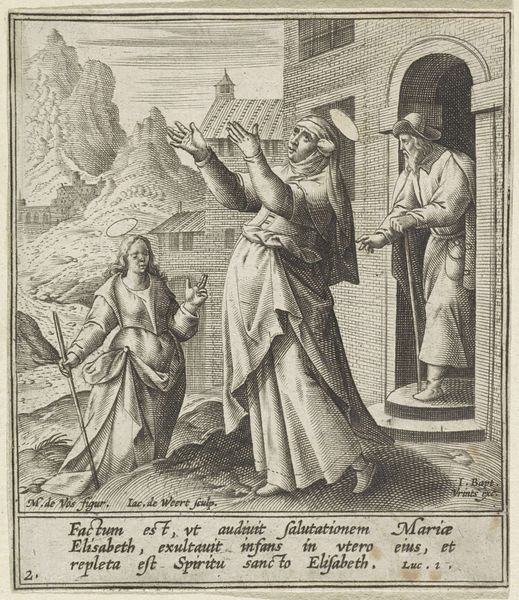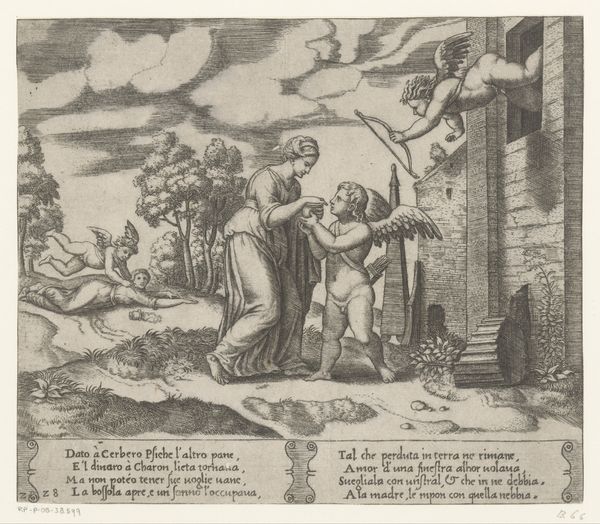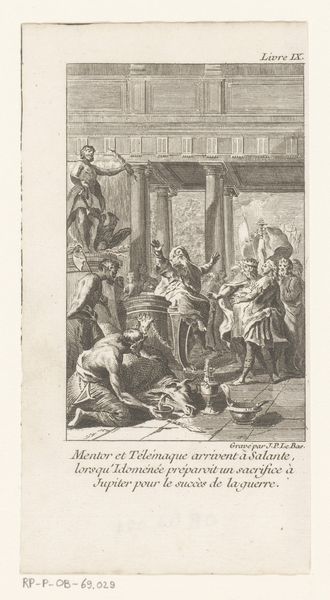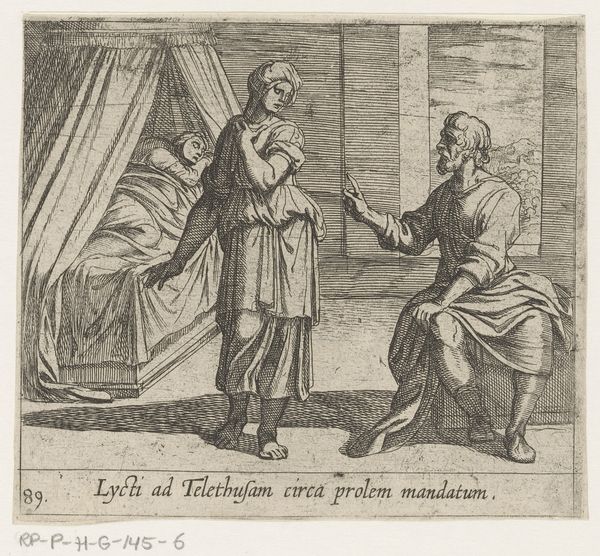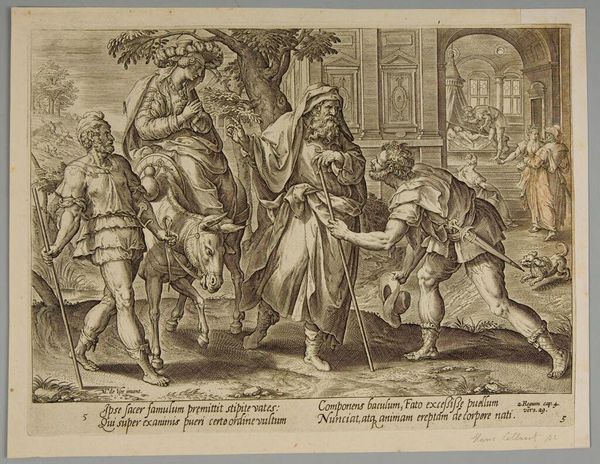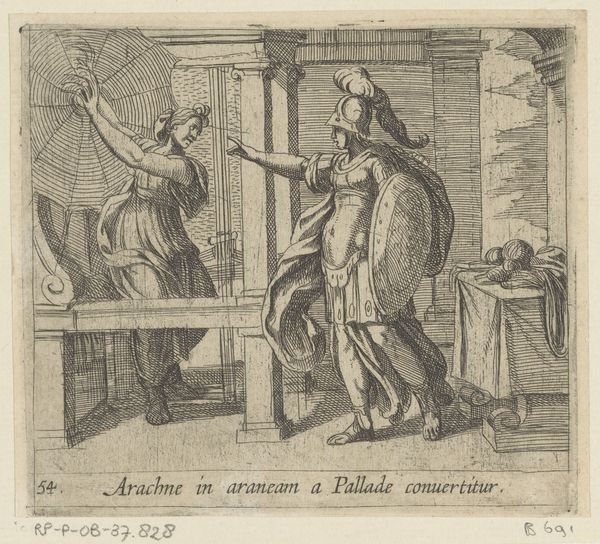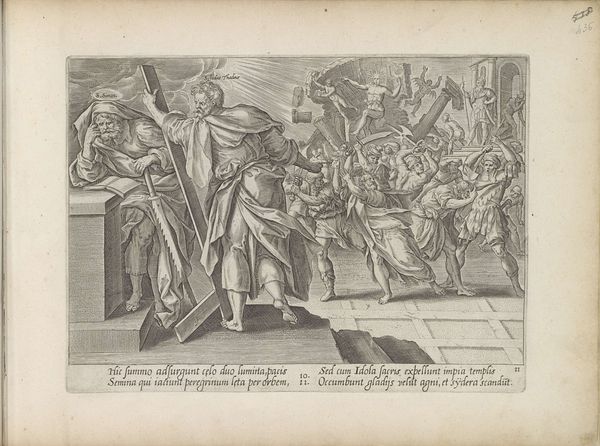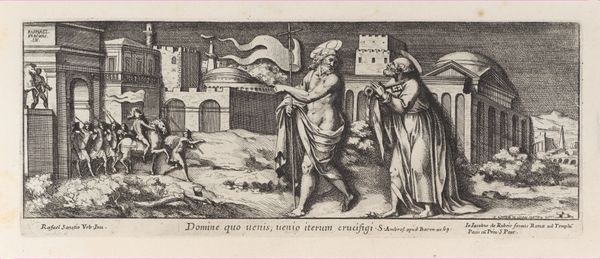
Plate 20: Mercury Turning Aglauros to Stone (Aglauros a Mercurio in lapidem transformatur), from Ovid's 'Metamorphoses' 1606
0:00
0:00
drawing, print, engraving
#
drawing
#
allegory
#
baroque
# print
#
figuration
#
history-painting
#
academic-art
#
engraving
Dimensions: Sheet: 4 1/8 × 4 5/8 in. (10.5 × 11.7 cm)
Copyright: Public Domain
Editor: Here we have Antonio Tempesta’s "Plate 20: Mercury Turning Aglauros to Stone" from 1606, an engraving based on Ovid's *Metamorphoses*, currently housed at the Met. The scene feels quite dramatic and the level of detail in the figures' expressions is amazing, even in print form. How do you interpret this work within its historical context? Curator: Considering Tempesta's "Mercury Turning Aglauros to Stone", we see a visual representation of power dynamics and social transgression during the Baroque period. Ovid’s *Metamorphoses* were commonly interpreted morally and politically. In this image, Mercury’s power isn't just divine; it’s a symbolic representation of authority silencing dissent, turning a disruptive voice—Aglauros—into an unyielding object. Editor: So, the artwork isn’t merely illustrative? What does it suggest about the art world during this time? Curator: Exactly. It raises questions about the artist’s role and the purpose of art itself. Is Tempesta endorsing this exercise of power, or subtly critiquing it? Think about the role of patronage during the Baroque era: art often served the interests of the powerful, reinforcing social hierarchies. Editor: Interesting. So by portraying the suppression of Aglauros, the artwork inadvertently reveals the potential constraints placed on artists. Curator: Precisely. The popularity of mythological subjects provided artists with an outlet to engage with contentious ideas. Moreover, it subtly suggests art can be seen as a form of silent resistance, open to various interpretations depending on the social landscape. Do you find yourself considering similar issues in your own work? Editor: That's definitely a perspective I hadn't considered before. It's fascinating to see how seemingly straightforward mythological scenes can hold layers of commentary about social dynamics and the artist’s position within them. Thanks for this nuanced analysis! Curator: My pleasure! It’s essential to remember that art doesn’t exist in a vacuum; it reflects and shapes our understanding of history.
Comments
No comments
Be the first to comment and join the conversation on the ultimate creative platform.
